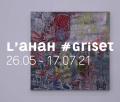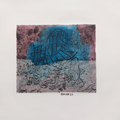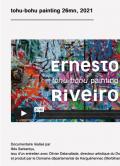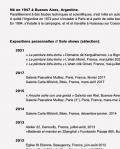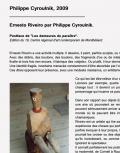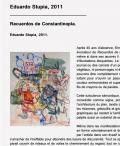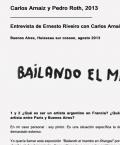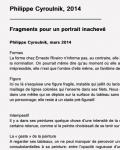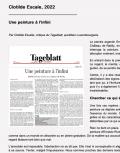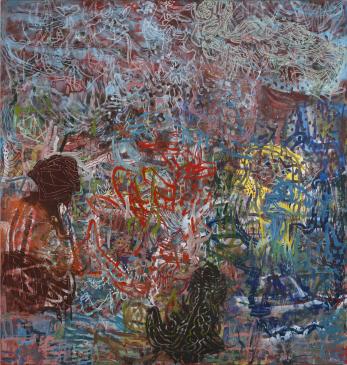Pascaline Mulliez, 2015
____________________________
The galerie Pascaline Mulliez is pleased to present the work of Ernesto Riveiro, an Argentine painter who arrived in France during the 1970s.
For a long time, Riveiro has seen the diptych as a means to escape the tyranny of the one, sole surface, unique and homogeneous, imposing a priori the spatiality of a work in progress. His polyptychs are thus composed of two panels of wood, two separate and distinct instances of painting. The association and assembly of the two elements elaborated separately — most often vertical but sometimes also horizontal — follow from the artist’s own criteria and constitute the final artwork.
When asking the question of how the white and blank surface of a canvas (or wood) can best be approached, for Ernesto Riveiro the difficulty is not the void as such, but much more the multitude of possibilities, which are a constraint. What matters to the painter is to excise, discard, lighten and simplify a mass of potential acts of painting.
The pictorial gesture in Riveiro’s work is graphic : the artist indicates a path on the surface of the canvas. The brush begins a movement, gives shape to a form, suspends its momentum , starts up again, then disperses itself in a constellation of blots, lets the colour spread in long streaks, thickening here, thinning to scratches there, scraping, weaving an almost geometric pattern, full of whimsy and movement.
The forms that emerge tend towards the archaic and extreme simplification, creating a cartography of pictorial space rather than of a landscape, a geography mapped without hierarchy. The artist positions, applies and superimposes, producing a depth where pentimenti may appear, if that is indeed what they are.
This is painting that solicits our imagination, but never satisfies it entirely. Our eye is trapped in a tangle of lines where a form could emerge that the painter is holding back, even buries, under the pattern of his gestures. This is not about narration; what is most real in the work of Ernesto Riveiro is painting.
Among the great artists of contemporary Argentine painting, one could very well imagine a dialogue between Ernesto Riveiro and artists like Sarah Grilo and Luis Felipe Noé.
Currently on display at the gallery, a collection of big-format paintings on canvas show the most recent preoccupations of the Argentine artist.
(Translation: Beatrix de Koster/14 March 2015)

